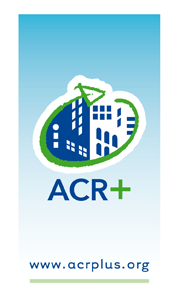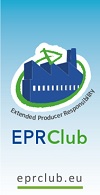

Brussels, 16 November
Discover the replay of the event here.
Introduction
On 16 November 2022, ACR+ as Secretariat of the EPR Club (a platform for exchange and debate about EPR in Europe) co-organised an event together with EBCD intergroup, and the European Circular Economy Stakeholder Platform (ECESP) at the European Economic and Social Committee in Brussels.
The event aimed at analysing not only the potential wider impacts of EPR on producers (eco-design including eco-modulation of fees, repair&reuse, new business models (leasing, etc), communication campaigns) and consumers (access to information and price signals) but also how EPR schemes can support local initiatives on reducing waste and promoting sustainable consumption (public awareness, boost repair activities).
This issue paper aims at gathering the main outcomes of this event, and the key take aways from speakers. It also seeks to present the different issues that are currently at stake in relation to EPR schemes, now that the European Institutions are working on different initiatives such as the revision of the Waste Framework Directive, the proposal for a Batteries Regulation or the proposal for a Packaging and Packaging Waste Regulation.
Panelists
• Emmanuel Katrakis, ECESP LG on economic incentives
• MEP Franc Bogovič
• Cillian Lohan, European Economic and Social Committee
• Peter Borkey, OECD
• Mattia Pellegrini, DG ENV, European Commission
• Pascal Leroy, WEEE Forum
• Axel Darut, CITEO
• Ioana Popescu, ECOS
• Jean-Pierre Schweitzer, EEB
• Elmar Willems, Circular Flanders
• Isaac Peraire i Soler, Catalan Waste Agency
Main intakes from speakers
Emmanuel Katrakis stressed the importance of economic incentives to drive sustainability and drive the transformation towards more circular value chains. Typically, EPR is needed when a waste stream has a negative value, hence when the costs needed for the proper collection, waste management and recycling are not going to be sufficient, as the benefits obtained by selling the materials that have been recovered do not cover these costs. For instance, EPR is not needed when a waste stream has a positive value, thus, when new EPR is established, economics must be examined. He also highlighted the importance of modulation feed to change consumer patterns and drive change.
MEP Franc Bogovič stated that the EU legal framework provides Member States with tools for efficient waste management and assures a framework for collective waste management system by the provider producers.However, these regulatory instruments have had a limited impact in volume and scope, or both. Therefore, new initiative and tools are needed for further promotion of the EPR schemes, both for producers and consumers. The aim is to promote wider impacts of the EPR on producers and consumers such as eco design and new business models, as well as use the EPR as an instrument for waste reduction of sustainable consumption.
Cilian Lohan declared that the European Economic and Social Committee welcomed the proposal to develop harmonised rules for EPR, in terms of textiles, but also to make reuse and recycling of textile waste more viable. The EESC emphasises the introduction of such a scheme must be accompanied by the creation of sufficient collection points in all regions. Concerning the Sustainable Products initiative, including the ecodesign directive, EESC states that leasing and selling goods or services should become a standard practice, and that EPR schemes should be mandatory for adoption by all Member States, as the EPR landscape is currently quite fragmented across Europe.
Peter Borkey emphasised that EPR has failed so far in influencing the way producers design their products, i.e. in incentivising the design of products that are easier to recycle. This issue is now addressed through EPR fee-modulation according to product design criteria, as is mandated in new EU regulation. A challenge is the lack of harmonisation of fees modulation criteria across different countries, sending mixed signals to producers. While for packaging, the EU can be an appropriate level of coordination about such criteria, for
other product groups such as WEEE, value chains are global, thus, the level of coordination might need to be at a different level, such as the G20.
Mattia Pellegrini reminded the audience that EPR is regulated by different EU legislations, and that the European Commission (EC) is working on harmonising EPR obligations through several new initiatives, such has the proposal for a Regulation on Batteries, the proposal for a Regulation on Packaging and Packaging Waste will harmonise EPR obligations, the Waste Framework Directive (with an emphasis on EPR for textiles), and the revision of the End-of-live vehicle (ELV) Directive. The EC is looking at several aspects link to EPR such as online sales, or a cross-border EPR fees to have a mechanism of compensation fees.
Pascal Leroy highlighted that the volume of Waste from Electrical and Electronic Equipment (WEEE) that is properly treated and recycled in Europe (55%) far exceeds that of the world at large (17%). WEEE that is collected in Europe is also treated to higher standards than in the rest of the world. That is largely due to twenty years of Extended Producer Responsibility legislation across Europe. However, legislation must be redesigned to make it fit for purpose for new market realities. There is a need to have the infrastructure in the hands of municipalities, as EPR relies on the existence of an extensive network of collection points.
Axel Darut discussed the need to have a global approach on the packaging value chain and cooperation among the different actors. Recycling rates for plastic packaging still face some challenges, especially hampered by product recyclability but also collection (EPR could be a good tool to increase collection). In the case of packaging, EPR is a good tool to promote reuse systems (5% of the fee dedicated to that). There is a specific target on reuse in France: 5% by 2023 and 10% by 2027, and PROs are responsible to reach those targets, otherwise they can get a fine, moreover, an Observatory in France controls the traceability and data.
Ioana Popescu defended that EPR should move towards covering all lifecycle impacts of products, not just recycling cost or recovery. However, it should not be a substitute for Ecodesign regulation, but take it to the next level, e.g. by using bonus/malus systems to foster modular design, ease of assembly/disassembly, homogeneous material streams, absence of substances of concern/driving chemical substitution. EPR fee modulation should aim for lifetime extension of products, as well as ensuring toxic free material loops. When it comes to EPR revenue, these should be dedicated to the development of infrastructure needed to mainstream the higher tiers of the circular economy.
According to Jean-Pierre Schweitzer, the focus now about new approaches to EPR should be oriented on saving the resources and reducing the environmental footprint from sectors. New models should be explored, notably those focused on value retention, those who are going to capture the value of valuable materials, and ensuring that information to consumers is informative, and that there's some level of harmonization. The new commission’s legislation is not really giving sufficient responsibility to online marketplaces, and the big challenge is not just the lack of responsibility, but the lack of resources that market surveillance authorities have to follow up with it.
Elmar Willems stressed the higher R-strategies (Refuse, Rethink, Reduce, Reuse, Repair, Refurbish, …) to effectively work on circular change. He also acknowledges the value of EPR-schemes in the past decades to create an efficient European wide market for recycling and responsible waste management. However, for some regular EPR materials and products, there is no decrease in the quantity put on the market and that this is indicative of the fact that EPRs do not lead to a reduction in consumption. The current EPR measures are indifferent to the fact whether more products are being consumed or not, whether those products are sustainable or not, whether people use them sustainably, etc.
Isaac Peraire i Soler introduced us to the Circular Fashion Pact, a Catalan initiative. This pact was widely welcome, as Catalonia has a great textile industry, and decisive measures are being defined to curb the impact of the climate crisis. The initiative is a voluntary pact between institutions and companies, therefore, covering different links in the textile value chain, in order to facilitate the incorporation of circularity measures, the promotion of collaborative projects and the improvement of the sector's competitiveness. So far, more than 70 members have joined, among them companies, government bodies, also municipalities, which commit to achieve general objectives and to contribute to achieving specific objectives for each
segment of the value chain.
Conclusions
After more than 30 years of EPR, we can say that it has been a successful tool to shift the responsibility for the product’s end of life from the consumer to the producers. However, where EPR has failed so far is in influencing the way producers design their products, for instance by incentivising the design of durable products that are easier to repair and recycle. Moreover, EPR should cover all the lifecycle impacts of products, not just recycling cost or recovery.
This issue is now beginning to be addressed through EPR fee-modulation according to product design criteria, as is mandated in new EU regulation. Yet, these criteria should be defined according to the product category.
A key challenge is the current lack of harmonisation of fees modulation criteria across different countries, which sends mixed signals to producers, hence, there is a strong need for the harmonisation at least of the criteria. It is not the same to talk about packaging than EEE (global value chain). Moreover, modulation must have an influence on price, otherwise consumer patterns are not going to change.
The EPR framework is theoretically favorable to implementing circular economy measures, in practice for some regular EPR materials and products, there is no decrease in the quantities put on the market. More research about the relation between EPR and (sustainable) consumption, good and less good practices should be done.
Online sales have not been addressed yet, the challenge is not just the lack of responsibility, but the lack of resources that market surveillance authorities have to follow up with it.
EPR is going to be expanded to new products such as textiles, and the European Commission is considering widening to other products. In France, with 14 product categories subject to EPR compliance, it would be wise to consider their experience.
In the meantime, initiatives such as the Circular Fashion Pact are good examples of value chain actors’ collaboration, aiming at achieving specific objectives such as the reduction of textile waste generation



